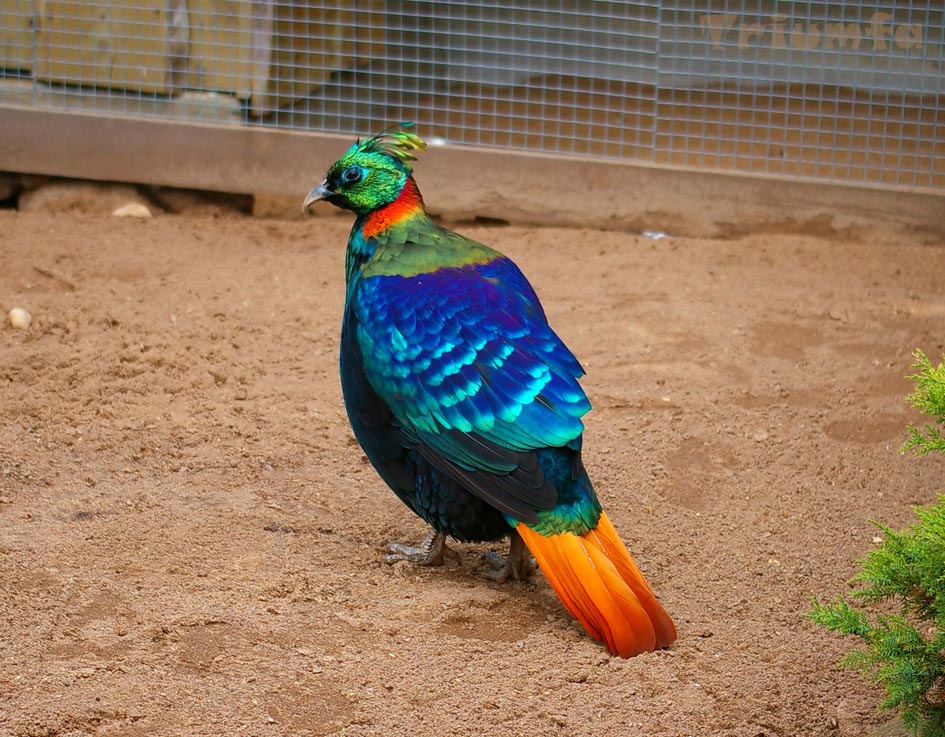
However, according to the Hindustan Times, the monal is under threat of large-scale poaching in the Himalayan regions. ( Klaus Rassinger and Gerhard Cammerer, Museum Wiesbaden/CC BY-SA 3.0)Īccording to the IUCN Red List of Threatened Species, the Himalayan monal is listed as of “least concern,” indicating that its population is healthy and stable. After six months, the young ones start to search for their own food. The incubation period is about 28 days, and the male bird guards and protects the eggs throughout this time. After the male wins the female’s heart, they build a simple nest, and the female lays two to five eggs that are white or dirty white in color with brown spots. Males not only call out in the morning but also during the entire day. The male Himalayan monal bobs its crest, fans the tail feathers, and indulges in various bodily displays to attract its female counterpart. Their extremely communicative nature both using body movements and vocalizations plays an important role during the mating season. The birds start their breeding season at the age of 2, and it begins at the end of April. While in the zoo, they feed on mixed vegetables, game bird chow, and insects.

Their diet includes a variety of seeds, buds, shoots, roots, and insects in the wild. According to the Sacramento Zoo ( pdf), these pheasants spend most of their day foraging for food. They can dig up to 10 inches under the ground. The Himalayan monal is said to possess a curved beak and is known to be an excellent digger. The Himalayan Times states that these birds can tolerate extreme winter, as they belong to the mountainous regions but depend on a lot of shelter and shade during the scorching sun of summer months and are unable to survive when faced with extreme heat. These birds are found in Nepal, Afghanistan, Bhutan, southern Tibet, and Burma, while many of them are also spotted in some northeastern Indian states such as Uttarakhand, Himachal Pradesh, Sikkim, and Arunachal Pradesh.

However, one common physical feature between both the male and female is that the eyes are ringed with a turquoise blue patch. They have a white neck, and the feathers of the upper part are brownish-black, while the tail feather consists of a mix of white feathers and a layer with a black and copper color. While the male counterparts possess more beautiful colored plumage, the female Himalayan monals are a bit dull in comparison. In flight, these birds, which average 70 centimeters in size, display a white rump and light-brown wings. Meanwhile, their copper-colored tail feathers, which are uniformly rufous, become darker toward the tips. Their spoon-shaped feathers are a combination of black, green, blue, purple, light yellow, brown, and red colors. It is the beautiful combination of hues in the male species of the Himalayan monal that has earned its name as the “nine-colored bird.” The most striking features of the male Himalayan monal include a long metallic green crest that is very similar to a peacock and a reddish-brown neck. Meanwhile, its alternative name “Impeyan monal” comes from Lady Mary Impey, the wife of the British chief justice of Bengal, who first kept these pheasants in captivity, according to The Himalayan Times, a daily newspaper published and distributed in Nepal. While the Himalayan monal is the common name for this distinctively colored species, among ornithologists, the bird is known as Lophophorus impejanus. Among Nepalese citizens, the bird is often referred to as the “Danphe.” ( Dibyendu Ash/CC BY-SA 3.0) This gentle species is the national bird of Nepal and the state bird of Uttarakhand, a state in the northern part of India.


Known for its metallic multicolored iridescent plumage, this large-size mountain pheasant is a feast to birdwatchers’ eyes. The Himalayan monal is one of nature’s stunningly beautiful birds.


 0 kommentar(er)
0 kommentar(er)
